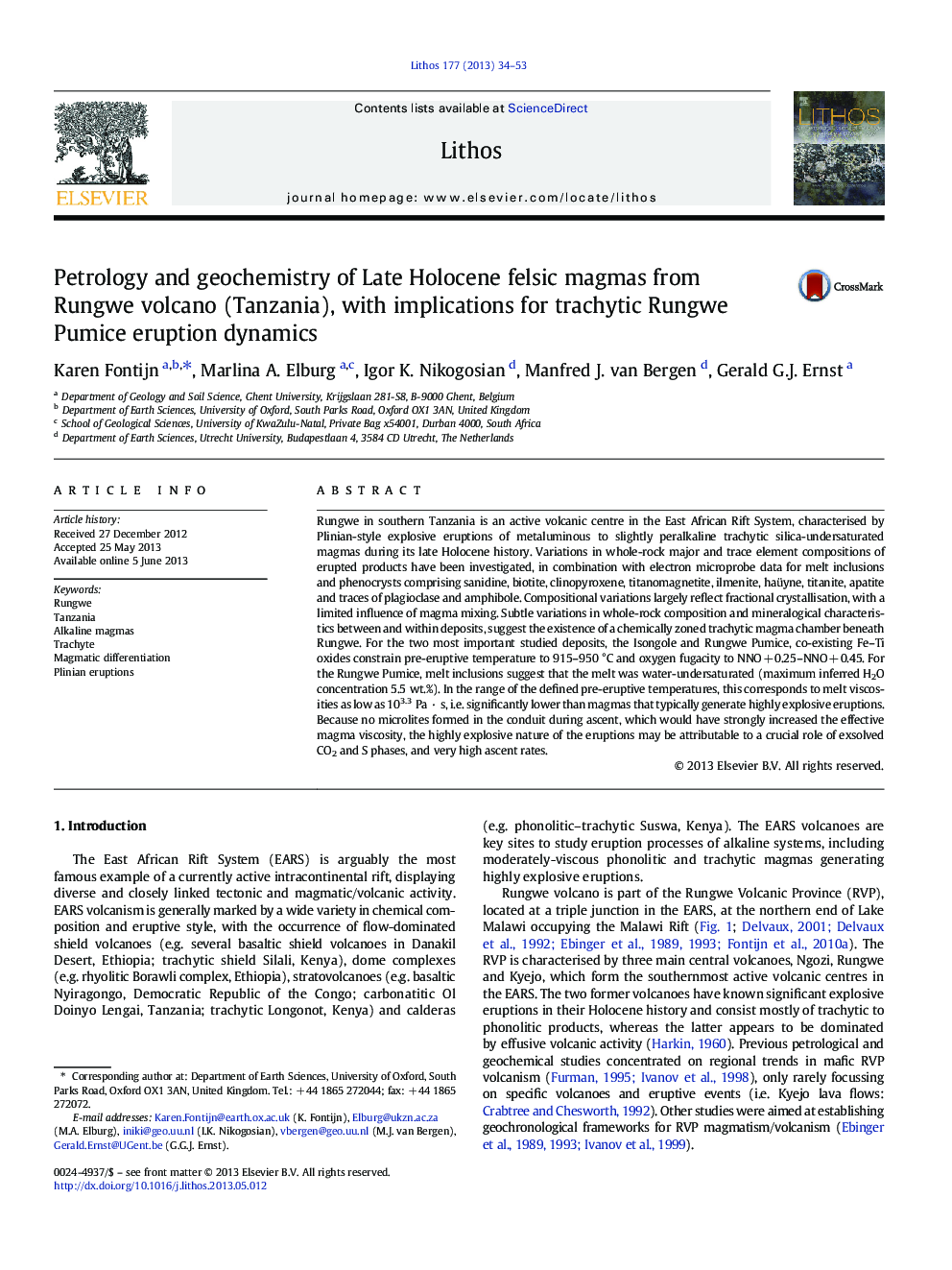| کد مقاله | کد نشریه | سال انتشار | مقاله انگلیسی | نسخه تمام متن |
|---|---|---|---|---|
| 6440926 | 1638688 | 2013 | 20 صفحه PDF | دانلود رایگان |
عنوان انگلیسی مقاله ISI
Petrology and geochemistry of Late Holocene felsic magmas from Rungwe volcano (Tanzania), with implications for trachytic Rungwe Pumice eruption dynamics
دانلود مقاله + سفارش ترجمه
دانلود مقاله ISI انگلیسی
رایگان برای ایرانیان
کلمات کلیدی
موضوعات مرتبط
مهندسی و علوم پایه
علوم زمین و سیارات
ژئوشیمی و پترولوژی
پیش نمایش صفحه اول مقاله

چکیده انگلیسی
Rungwe in southern Tanzania is an active volcanic centre in the East African Rift System, characterised by Plinian-style explosive eruptions of metaluminous to slightly peralkaline trachytic silica-undersaturated magmas during its late Holocene history. Variations in whole-rock major and trace element compositions of erupted products have been investigated, in combination with electron microprobe data for melt inclusions and phenocrysts comprising sanidine, biotite, clinopyroxene, titanomagnetite, ilmenite, haüyne, titanite, apatite and traces of plagioclase and amphibole. Compositional variations largely reflect fractional crystallisation, with a limited influence of magma mixing. Subtle variations in whole-rock composition and mineralogical characteristics between and within deposits, suggest the existence of a chemically zoned trachytic magma chamber beneath Rungwe. For the two most important studied deposits, the Isongole and Rungwe Pumice, co-existing Fe-Ti oxides constrain pre-eruptive temperature to 915-950 °C and oxygen fugacity to NNO + 0.25-NNO + 0.45. For the Rungwe Pumice, melt inclusions suggest that the melt was water-undersaturated (maximum inferred H2O concentration 5.5 wt.%). In the range of the defined pre-eruptive temperatures, this corresponds to melt viscosities as low as 103.3 Pa · s, i.e. significantly lower than magmas that typically generate highly explosive eruptions. Because no microlites formed in the conduit during ascent, which would have strongly increased the effective magma viscosity, the highly explosive nature of the eruptions may be attributable to a crucial role of exsolved CO2 and S phases, and very high ascent rates.
ناشر
Database: Elsevier - ScienceDirect (ساینس دایرکت)
Journal: Lithos - Volume 177, 1 September 2013, Pages 34-53
Journal: Lithos - Volume 177, 1 September 2013, Pages 34-53
نویسندگان
Karen Fontijn, Marlina A. Elburg, Igor K. Nikogosian, Manfred J. van Bergen, Gerald G.J. Ernst,